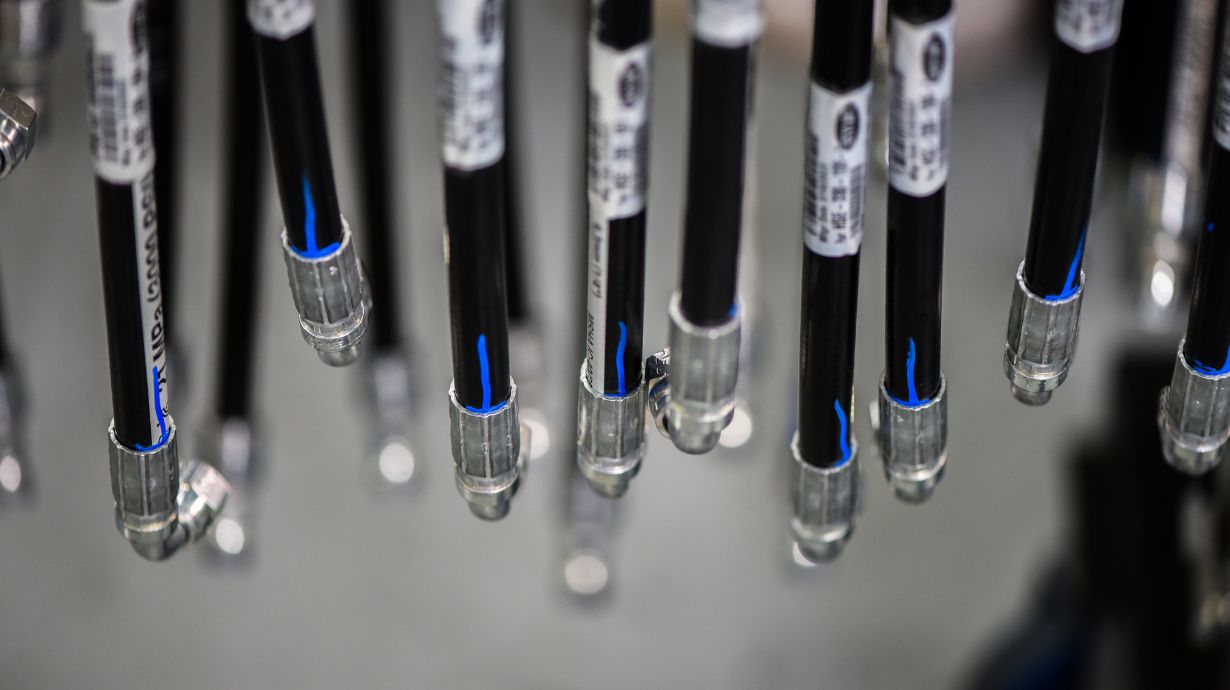The Hidden Force Behind Your Machines: Hydraulic Hose Facts

Hydraulic hoses work behind the scenes, quietly powering everything from construction equipment to factory machinery. But there's more to these seemingly simple solutions than meets the eye. Whether you are a seasoned pro or a spring chicken in the hydraulic industry, this blog will provide you with some helpful facts to get you started!
Designed to Withstand Pressure
Your average garden hose is not the same as a specialized hydraulic hose. Hydraulic hoses are made up of multiple layers, each playing a crucial role in fluid transfer and pressure handling:
Inner Tube: This core layer, typically made of rubber or fluoropolymer, transports the hydraulic fluid to power your equipment. The material needs to be compatible with the fluid and flexible enough to handle movement for efficient and safe operation.
Reinforcement Layer: Often, a (stronger) braid or (weaker) spiral of high-tensile steel wire is used as a reinforcement for hydraulic hose. This strengthens the hose to withstand high pressures without bursting.
Outer Cover: The outermost layer protects the hose from wear and tear. This layer is usually formulated to resist weather, oil, abrasion, or any other environmental threats the hose might encounter, though additional hose protection may be employed in particularly harsh environments for extra protection.
Choosing the Right Hose for the Job
Not all hydraulic hoses are created equal. Different materials are suited for various applications:
Elastomeric or Rubber Hoses: These are the most common type of hydraulic hoses, offering good flexibility and ranging from low to high pressure applications.
Fluoropolymer Hoses: For high-temperature operations and harsh environments, these hoses offer superior resistance to chemicals and corrosion.
Thermoplastic Hydraulic Hoses: These hoses provide excellent kink resistance and tight bend radii, making them ideal for applications with limited space.
Metal Hydraulic Hoses: Metal hoses can handle extreme temperature flow materials, as well as very high pressures, making them ideal demanding industrial settings.
Hydraulic Hoses 101: Hose Facts
Here are some additional factors to keep in mind when working with hydraulic hoses:
Hose vs. Tube: Hydraulic fluid can be routed through a system using hydraulic hoses or tubes. Tubes are better suited for high heat environments, while hoses excel in high vibration areas or when connecting to moving parts. Visit Connection Comparison: Hydraulic Hose vs. Tube Assemblies to learn more.
Hydraulic Hose Sizing: The inner diameter of your hose and is crucial for ensuring proper flow and pressure. Visit When Size Matters: Your Guide to Properly Sizing Hydraulic Hose for a guide to hydraulic hose sizing.
Materials and Reinforcements: Not all hydraulic hoses are created equal. Due to differences in construction, some hoses are better suited for specific hydraulic tasks than others. Visit A Buyer’s Guide to Hydraulic Hose Materials and Reinforcements to help easily identify which hoses are best suited for your application.
Maintenance Matters: Contamination in the hydraulic system can lead to serious damage. Regularly changing the oil and filters helps extend the lifespan of your hoses and the entire system. Learn how to prevent failure due to contamination by visiting 70-80% of Hydraulic Component Failure is Caused by Dirty Oil: Here's How Triad Technologies Can Help.
Assembled Strength: A hose assembly, including the hose and fittings, is only as strong as its weakest component. Always ensure both your hose and fittings are rated for the job requirements. For tips on maximizing the lifespan of your next hydraulic hose, visit Maximizing the Lifespan of Your Hydraulic Hose with Triad Technologies.
We’re Here To Help
With this guide to basic hydraulic facts, you’re well on your way to selecting the right hydraulic hoses and ensuring the smooth operation of your equipment. However, if you still have questions about hydraulic hose or about your specific application, visit one of our Triad Technologies ParkerStores or contact the Triad Technologies team – we're here to help! And the next time you see a piece of equipment operating effortlessly, remember there's probably a network of trustworthy hydraulic hoses (and Triad ParkerStores) working behind the scenes to keep it moving!